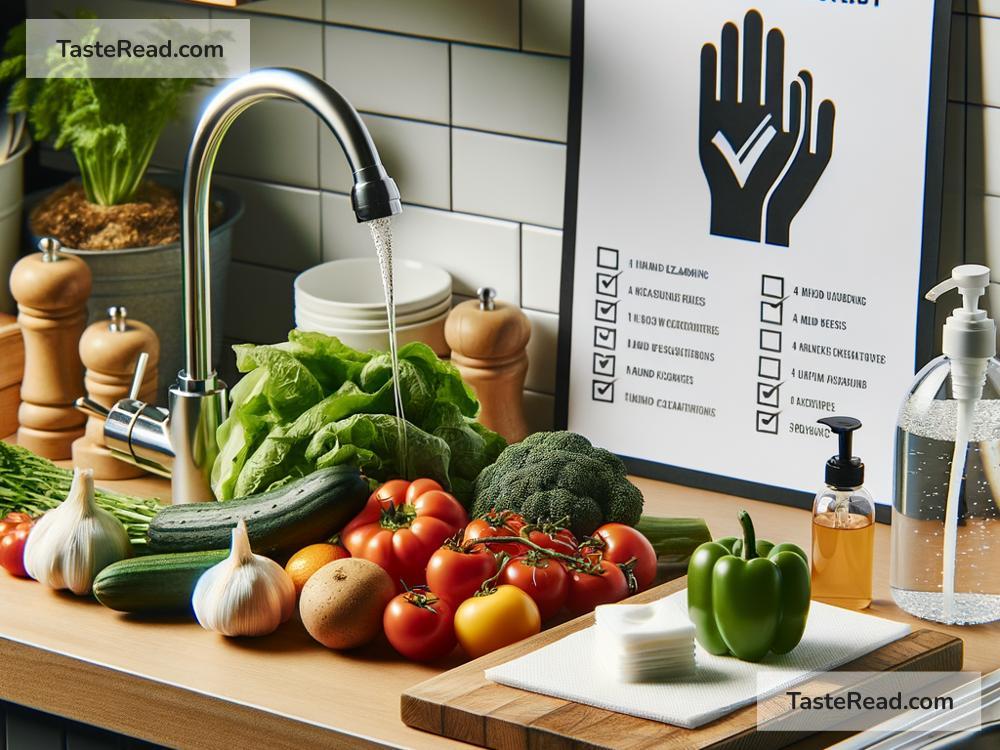How to Identify and Avoid Foodborne Pathogens
Foodborne illnesses happen when harmful germs, known as pathogens, contaminate the food we eat. These microscopic invaders can cause everything from upset stomachs to more serious illnesses. Thankfully, by learning how foodborne pathogens work and using safe food practices, we can protect ourselves and our loved ones. In this article, we’ll explain how to identify and avoid foodborne pathogens in simple terms.
What Are Foodborne Pathogens?
Foodborne pathogens are tiny organisms, like bacteria, viruses, and parasites, that can make us sick. They’re invisible to the naked eye but can be lurking in food and drinks. Here are some common examples of foodborne pathogens:
- Salmonella: Found in raw or undercooked poultry, eggs, and even fruits and vegetables.
- E. coli: Typically comes from contaminated water or raw beef.
- Listeria: Often found in soft cheeses, deli meats, and unpasteurized dairy.
- Norovirus: Can spread through food that’s handled by infected people.
- Campylobacter: Found in raw or undercooked meats, especially chicken.
These pathogens can cause symptoms like diarrhea, fever, stomach cramps, and vomiting. While most cases are mild, severe infections can lead to hospitalization or even death, especially for young children, older adults, pregnant women, and people with weakened immune systems.
How Do Foodborne Pathogens Spread?
Foodborne pathogens get into our food through several routes:
- Contaminated Surfaces: This happens when cutting boards, knives, or countertops aren’t cleaned after handling raw meat.
- Poor Cooking Practices: Undercooked or improperly handled food can harbor pathogens.
- Unwashed Hands: Germs from our hands can transfer to the food we prepare.
- Contaminated Water: Water used for cooking, washing produce, or drinking can sometimes contain pathogens.
- Cross-Contamination: This occurs when raw food, like chicken or fish, comes into contact with ready-to-eat food, like salad greens.
Knowing how foodborne pathogens spread is the first step in preventing them.
How to Identify Unsafe Food
While pathogens are invisible, sometimes food shows signs of contamination. Look out for:
- Foul Odor: If food smells bad, it may be spoiled and unsafe to eat.
- Unusual Texture or Color: Mold or discoloration are strong signs something has gone bad.
- Damaged Packaging: Items with torn seals or dents may have been exposed to bacteria.
- Expired Labels: Foods past their expiration date are more likely to harbor dangerous germs.
Even if food looks fine, you should still be cautious with high-risk items like raw meat, eggs, and seafood.
How to Avoid Foodborne Pathogens
The good news is, there are simple ways to prevent foodborne illness. Follow these steps:
1. Practice Good Hygiene
Wash your hands thoroughly with soap and water before and after handling food. This is especially important after touching raw meat, using the restroom, or sneezing.
2. Cook Food Properly
Cooking food at the right temperature kills most bacteria and viruses. Use a food thermometer to check that meats reach safe temperatures. For example:
– Chicken: Cook to at least 165°F (74°C)
– Ground beef: Cook to 160°F (71°C)
– Fish: Cook to 145°F (63°C)
3. Store Food Correctly
Keep perishable food in the refrigerator and avoid leaving it at room temperature for too long. Pathogens can grow rapidly between 40°F (4°C) and 140°F (60°C), known as the “danger zone.” Refrigerators should be set to 40°F or below, and freezers should be at 0°F (-18°C).
4. Avoid Cross-Contamination
Keep raw foods separate from ready-to-eat ones. Use different cutting boards for raw meat and vegetables. Wash all utensils, surfaces, and tools thoroughly after use.
5. Wash Produce
Rinse fruits and vegetables under running water to remove dirt, bacteria, or pesticides. Don’t use soap or bleach; clean water is enough.
6. Be Cautious with Leftovers
Refrigerate leftovers within two hours and eat them within three to four days. Reheat them to a safe temperature (165°F or higher) before eating.
7. Drink Safe Water
Drink only filtered or bottled water, especially when traveling to areas with questionable water quality. Avoid consuming ice made from contaminated water.
8. Buy Food from Trusted Sources
Purchase fresh food from reputable stores or markets. Avoid items that look spoiled or improperly stored.
What to Do If You Suspect Foodborne Illness
If you suspect food poisoning, drink plenty of fluids to avoid dehydration. Seek medical help if symptoms are severe, such as persistent vomiting, bloody diarrhea, or high fever. Be extra cautious if you’re caring for someone at higher risk of complications.
Preventing Foodborne Pathogens Is Easy!
While foodborne pathogens can seem scary, the solution is simple: handle food safely and stay aware. By practicing hygiene, cooking and storing food correctly, and avoiding risky behaviors, you can greatly reduce your chances of getting sick. Small steps like washing your hands, using a food thermometer, and cleaning surfaces can make a big difference.
Food is meant to nourish us, not harm us. With the tips above, you can enjoy your meals with confidence and keep foodborne pathogens at bay!


